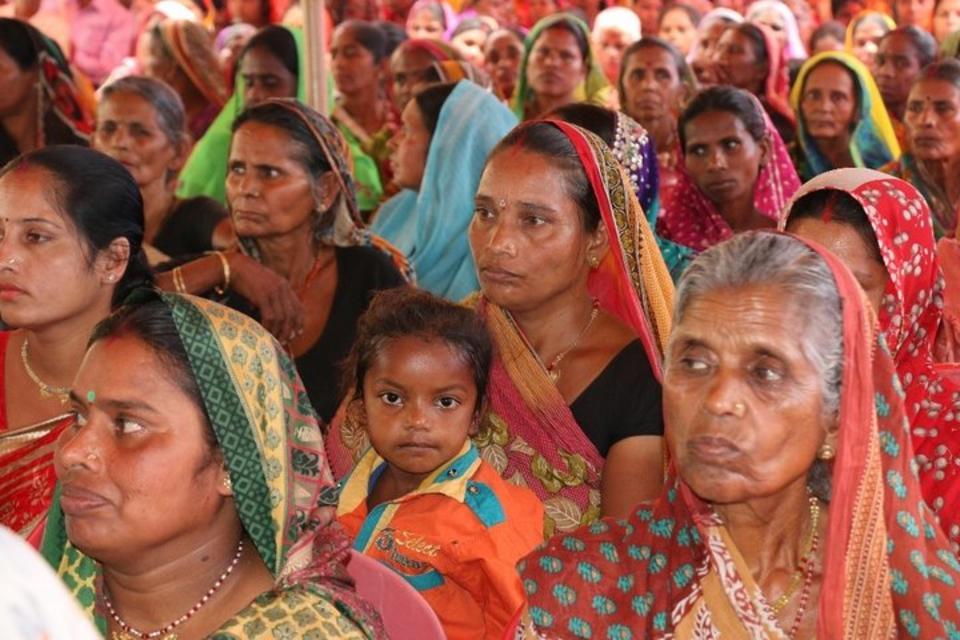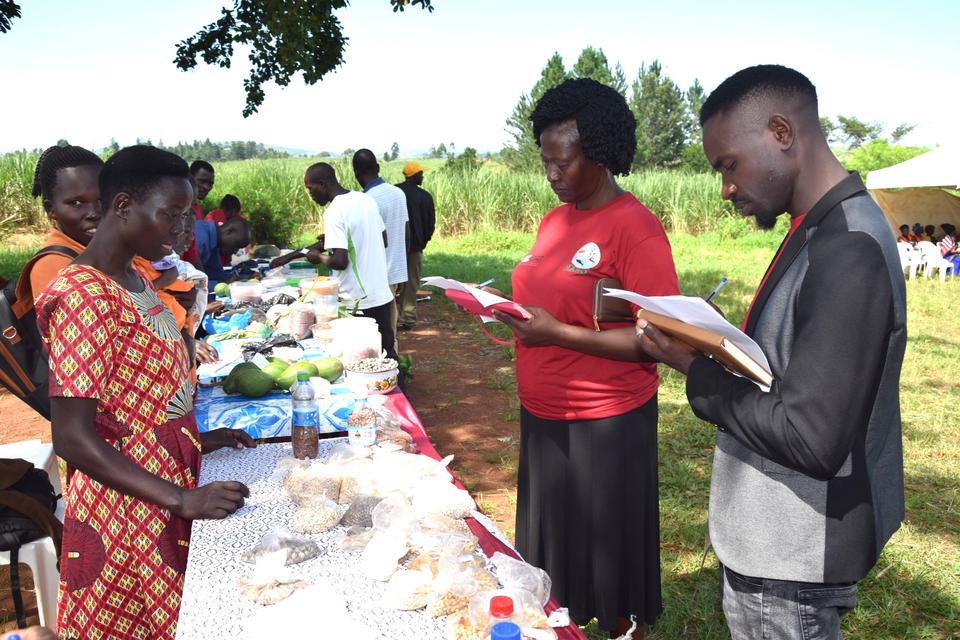Blog Planting seeds of hope: Community seed banks empower farmers and address climate risk in India
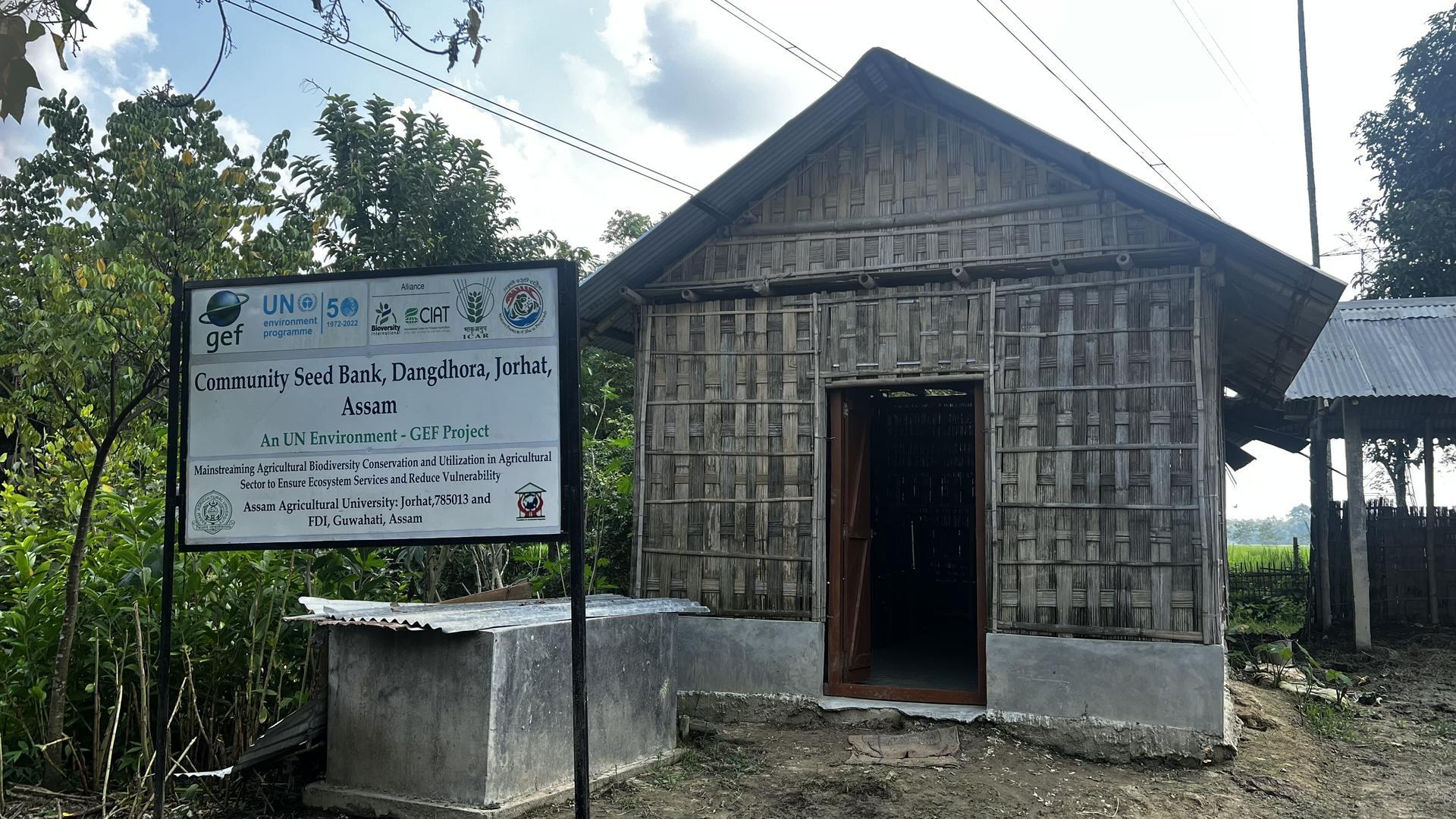
Seeds are the heart of agriculture. When they are kept alive, seeds can feed a family, help a farmer make ends meet, and sustain life. By conserving, cultivating, and sharing a wide diversity of seeds, Indian farmers are also insuring food systems against climate shocks.
By: Ma. Christabella Therese Cabildo, Jay Justine Panghulan
In April 2022, India experienced its hottest recorded month in more than a century, a red flag for the monsoon-dependent country. India’s weather patterns, particularly drought and irregular rainfall, are increasingly generating lower farm yields. To mitigate these agricultural challenges, plant genetic resource (PGR) initiatives are being implemented to maximize the use of local genetic diversity, with a particular focus on climate-resilient crops.
For Alliance India Country Coordinator Dr. Jai Rana, community seed banks are an effective medium to address climate risks as they:
- Improve farmers' access and availability to seeds that are locally adapted to climate stresses but are no longer available with farmers,
- Allow farmers to access seeds from other areas where seeds have adapted previously
- Enable farmers to practice crop diversification through increased availability of varietal diversity.

Jai Rana
Senior Scientist and Country Representative for India
India is one of the 12 mega gene centers of the world, with rich agrobiodiversity that has adapted to local conditions. Many of these landraces and traditional varieties are "lost" or severely underutilized, making community seed banks an appropriate approach to help conserve these varieties amidst the climate crisis.
An important aspect of this work involves institutionalizing community seed banks. By collecting diverse seeds in farming communities, seed banks have generated wider genetic diversity, plant sustainability, and self-sufficiency. Community seed banks are especially helpful for farmers in isolated areas with limited access to resources and modern technologies.
A vast majority of small and marginal farmers in India have access to limited variety of seeds that are of poor quality and accessed from local markets or seed exchange.
“Good quality seeds of diverse varieties and crops accessed through community seed banks can mitigate risks, reduce yield loss and increase farmer incomes,” Ronnie Vernooy, Senior Scientist at the Alliance and a specialist in community seed banks, said.
The scientist added that community seed bank farmers are trained to harvest, treat, store and multiply seeds that are of better quality than those available in local market.
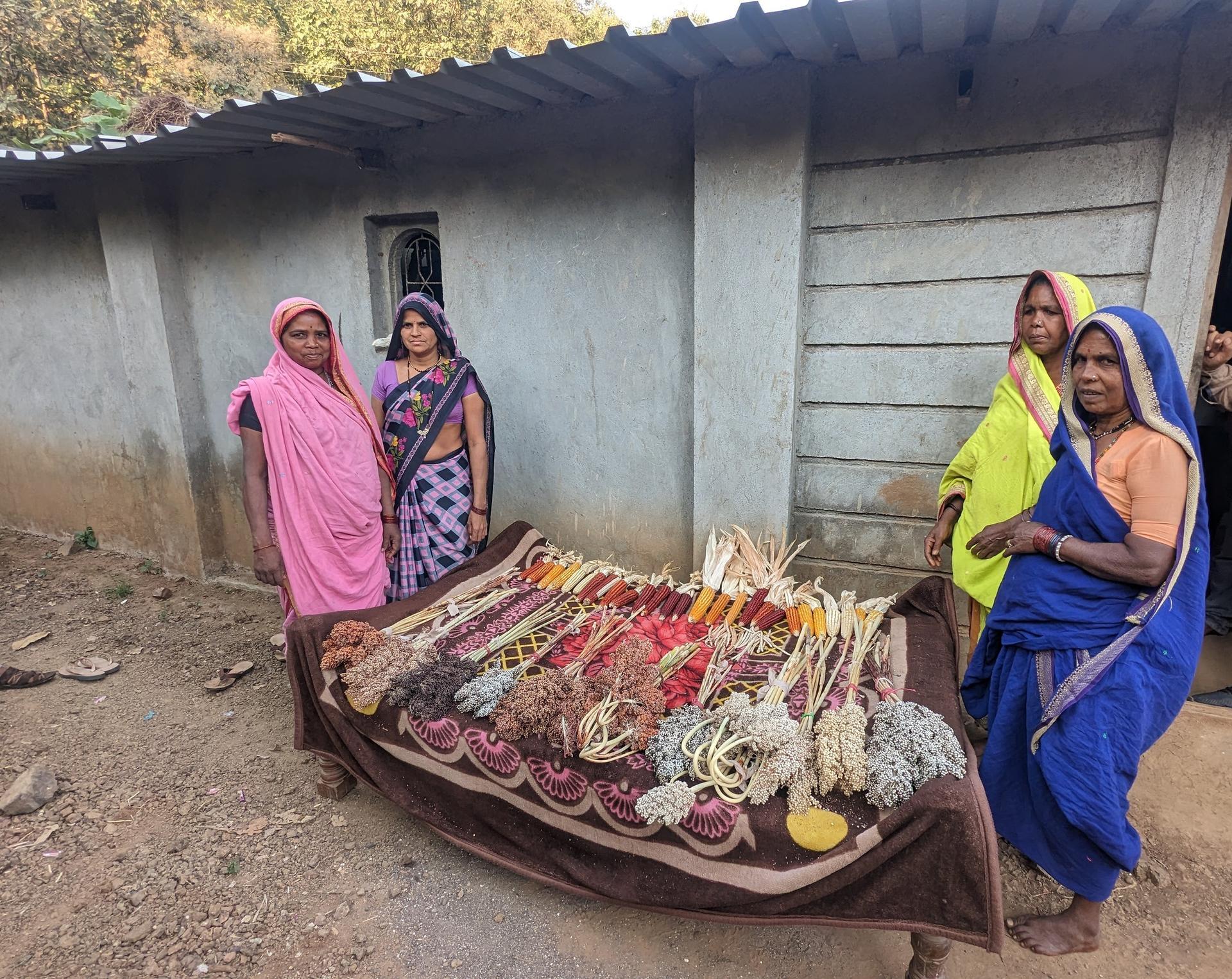
Tribal women from the Nandurbar district in Maharashtra in front of diverse varieties of corn and sorghum landraces they grow. These seeds, and other crops, are being saved at the just established CSB they are standing in front of. Photo by: Sarika Mittra (October 2023).
Mainstreaming seed systems
To expand the reach of community seed banks, informal arrangements in a community, specifically with farmers, can be made to create opportunities for continued crop diversification and sustainability in the region – this is known as mainstreaming local seed systems. Community seed banks are safety nets for farmers, especially during times of unfavorable weather conditions and food shortages. Through these systems, farmers follow a collective system of producing, exchanging, or selling good quality seeds.
Together with local partners, the Alliance of Bioversity International and CIAT has implemented participatory approaches to mainstream PGR conservation and develop community seed banks. This strategy enables the Alliance and Indian partners to launch the Seeds for Needs Programme — an initiative that targets farmers’ access to diverse crop varieties and can adapt to agro-ecological conditions.
Experience from several countries have shown that many community seed banks become non-functional a few years after establishment without external financial, institutional or technical support.
“Mainstreaming allows community seed banks to generate income that is essential for the function of the seed bank and aids the on-farm conservation of traditional varieties and landraces while value-addition generates livelihood opportunities for associated rural communities,” Rana pointed out.
In India, the Alliance has partnered with a diverse range of stakeholders including national government departments, state universities, civil societies, private sector, and farmers to mainstream traditional varieties and landraces.
The Seeds for Needs Programme and the community seed bank initiatives in the region forward participatory crop improvement and knowledge-sharing strategies which create ways to provide farmers and smallholders with cheaper and easier access to quality seeds, bridging farmers and markets together. These seed systems and value chains in the region safeguard both sustainability and food security at the same time.
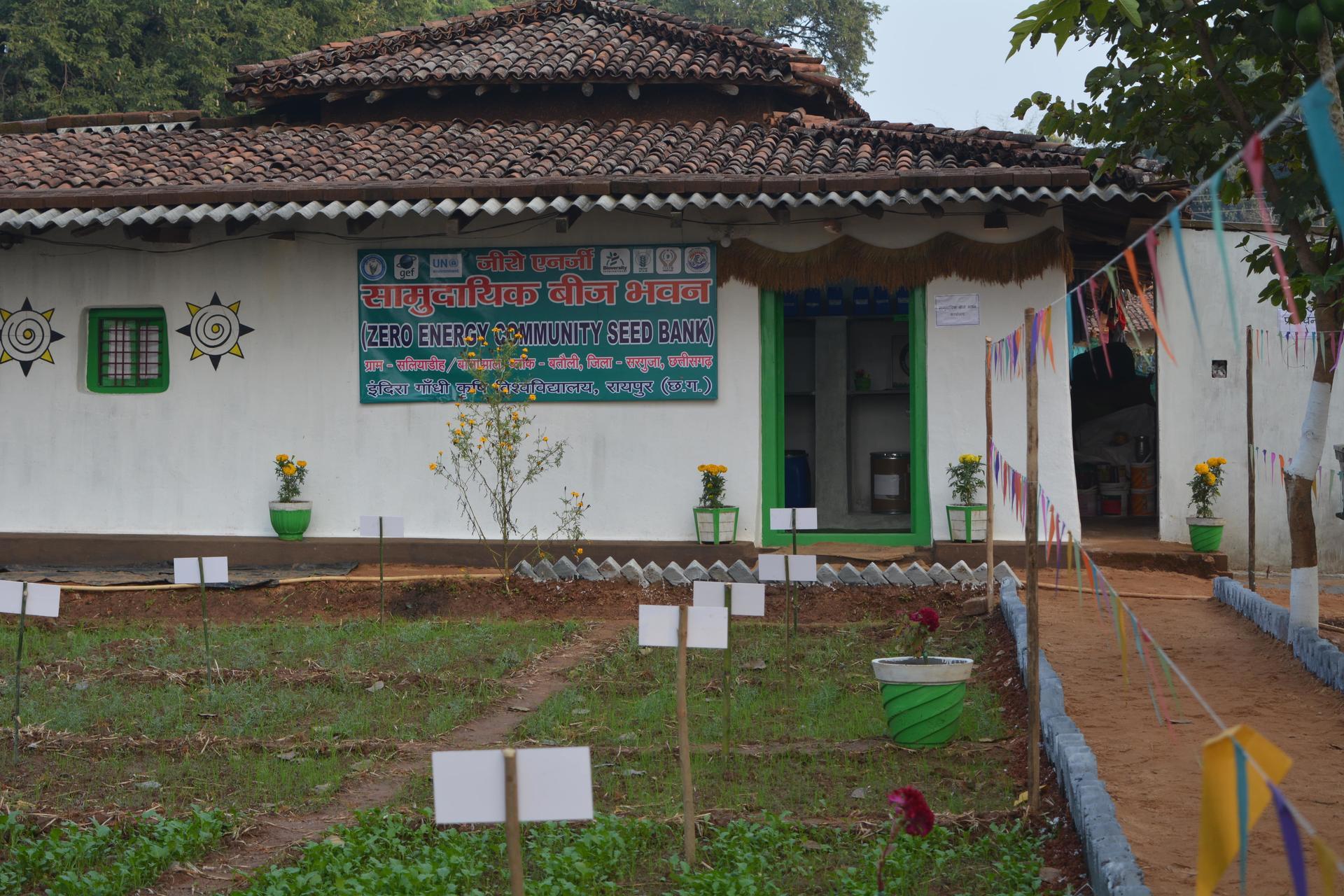
Zero energy community seed bank in Ambikapur district in Chhattisgarh state. Photo by: Jai Rana (February 2021).
Protecting farmers’ rights
Implementing community seed banks has ensured smallholder farmers access to good quality seeds and a more participatory approach in conserving best-performing varieties of two of India’s major crops: rice and wheat.
At the same time, community seed banks have been strengthening farmers’ rights for nearly 20 years. In India, the legislation of the Protection of Plant Varieties and Farmers’ Rights Act of 2001 protects the rights of farmers, specifically the rights to save, exchange, and sell seeds and varieties.1
Ever since, plant breeders who undertake research on seed characteristics and crop-based agriculture enjoy intellectual property rights—allowing them to receive monetary benefits. However, indigenous communities and farmers were deprived of such opportunities, despite being the ones who provide the germplasm that breeders use. Consequently, communities that conserve local varieties are also granted special rights, particularly the right to own and maintain a variety, and to demand royalties and receive monetary benefits.
With community seed banks becoming significant players in the seed market, they allow local and farm-saved varieties to extend their reach and farmers to receive monetary benefits. In other words, community seed bank implementation not only contributes to PGR conservation and management but also empowers farmers to conserve local and unique seeds that can be of commercial use.
Entering the seed market
The Alliance’s work on the community seed bank initiatives, through development partnerships, puts a premium on further helping farmers in generating income. Working in support of community seed banks, the Farmer Producer Organization (FPO), which aids farmers pool their knowledge, buys seeds from farmers, and brings them to trade markets under their own brand named “Dharti Naturals.” By acting as the intermediary between farmers and the market, FPO allows farm-saved seeds to widen their reach and the farmer-led seed system to enter the national seed market.
Farmer seed networks are limited by geography, labor and financial support, Rana said.
“Embedding them within local seed enterprises can scale up their activities and reach as they can take advantage of increased institutional support, improved recognition and an established distribution and supply network.”
Agricultural extension centers are scaling up efforts to engage with more seed growers and farmers in other areas of India. The Alliance is supporting this by developing more public-private partnerships, such as with local plant breeding organizations and distribution enterprises that can contribute to seed security.
Community seed banks will continue to have a wider reach and impact as farmers are better equipped with knowledge and skills in seed selection, seed health management, and seed production that can ultimately conserve plant genetic resources and improve India’s agriculture.
Cover Image: Community Seed Bank at Dangdhora, Assam built in the traditional Assamese style. Photo by: Dsouza Sonal (October 2023).

